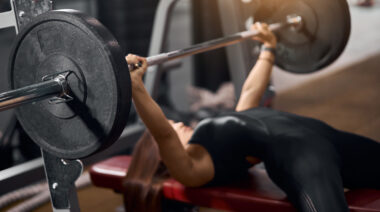The fitness industry is no stranger to fads. In fact, aside from the impossible-to-keep-up-with world of fashion or the ever-obsolete-rendering technology domain, fitness might just beat out all other businesses in the game of here today, gone tomorrow.
Once in a while, however, some fads rise above the others, surpass trend status, and make it big. They stick. Mobility is one such fad.
The fitness industry is no stranger to fads. In fact, aside from the impossible-to-keep-up-with world of fashion or the ever-obsolete-rendering technology domain, fitness might just beat out all other businesses in the game of here today, gone tomorrow.
Once in a while, however, some fads rise above the others, surpass trend status, and make it big. They stick. Mobility is one such fad.
The Roots of the Mobility Fad
Not too long ago – somewhere around the Jane Fonda and Get in Shape Girl era – the tip of the mobility iceberg began to surface.
Everyone suddenly needed to dress in spandex (regardless of gender), pop in an awesome mix tape, and stretch. Flexibility or lack thereof became a huge focus of fitness. Even diehard stretching devotees knew they should be stretching more.
Fast forward a few decades, and other fads have come and gone, but the mobility iceberg has surfaced further.
With the help of the Internet, word spread quickly as people figured out that flexibility is only one component of mobility and that there was more work to do.
An exponentially growing number of people now understand that fascia, connective tissue, and ligaments all play a part in restricting movement, or at least that stretching doesn’t cover all the bases.
In light of this, almost any gym you walk into – Globo, boutique, CrossFit, or otherwise – has a section separate from the main gym space reserved for mobility work.
Foam rollers, bands, straps, yoga mats, and lacrosse balls are ready to help mash, smash, roll, and pull tight body parts into unrestricted bliss. And, since more is always better, lots of dedicated athletes and gym-goers have the same arsenal of mobility tools available at home.
Had I known mobility was about to reach its tipping point, I would have bought stock in high-density foam and lacrosse ball manufacturing companies.
Mobility may have started as a fad, but it gained serious momentum in the trend phase, and now – fueled by viral videos and using CrossFit’s popularity as a vehicle – we are in the middle of a full-on mobility craze.
We’re talking a Beatlemania, Beiber Fever, kind of craze. Have we gone too far? What does the rest of the mobility iceberg look like, below the surface?
Two Sides of the Coin: Mobility and Stability
To start, let’s first give mobility credit where credit is due. Mobility is (almost) everything. If you lack range of motion, no amount of muscle strength will power you through that restricted movement, at least not without serious repercussions – for example, pain.
Restricted movements will force the body to compensate, creating further dysfunction. Additionally, if a muscle cannot achieve its optimal length, it cannot generate sufficient force.
In short, good mobility is a basic requirement of quality, safe, and efficient human performance. I am a fan. I’m psyched that the masses are aware that restricted mobility causes trouble and they are ready to take charge and do something about it.
As amazing (and necessary) as mobility is, if it’s “almost” everything, then the other side of the coin is – you guessed it – stability. Stability can exist without mobility, but you wouldn’t get too far.
If everything locked down to stabilize, you would have a lot in common with a tree stump. On the other hand, if you had amazing mobility without stability, movement would be next to impossible and sloppy at best.
Thankfully, most of us fall somewhere just off to one side of the correct proportions of each. In other words, we are likely either walking around with a bit too much mobility without sufficient stability, or a bit too much stability without enough mobility.
The Problem of Excess Stability
The first scenario – excessive mobility while lacking stability – is an easy fix. Strength training. Stability work. Get control of all that movement. It would make sense then that in the case of the latter – mobility deficits with excessive stability – the same approach would help. Increase mobility. Stretch, roll, and release. Achieve unrestricted range of motion.
This approach focuses on deficits and increasing what is missing. For my gangly, mobile, Bambi-on-ice patients I want to focus on increasing stability.
However, by only trying to increase what is missing, we fail to look at the whole picture.
While my goal is not typically to decrease available movement, sometimes, somewhere along the process of increasing stability we might get a reduction in (hyper)mobility. Not necessarily a bad thing.
On the flipside, those with insufficient mobility need to consider the role stability plays in their dysfunction. It is quite easy to come to the conclusion that you have a limited range of motion, but how in the world would you assess that you have an excess of stability? Simple. They are one and the same. Yep, Finkle is Einhorn.

That tight muscle you assault on a regular basis is likely an overworked scapegoat, providing stability to keep you going. In the presence of instability, muscles and joints lock up to hold you together.
You’ve always known you’ve had tight hamstrings, but you blame it on not stretching enough, too many posterior chain workouts, or perhaps genetics is your excuse. Haven’t you ever wondered the real reason your muscles were tight?
Did you ever consider that maybe those muscles can’t let go because they are holding on for a reason? When muscles start doing more work than they were designed to do, we have a problem. Tendinitis, muscle strains, decreased mobility.
If you can teach a muscle to relax, not by pounding it into submission, but rather by turning on the correct muscles to create stability, the tight, limiting offender might just be able to let go.
The Best Application for Mobility Work
So here we are, in the middle of this mobility craze, borderline epidemic
As I approach the end of my first decade working as a physical therapist, I can say with absolute certainty that the number of people suffering from self-proclaimed mobility problems is an all-time high.
Just a few years ago, I’m pretty sure I never heard the word mobility used by anyone outside of the health and fitness fields. At this point, it’s a tossup between selfie and mobility for most overused words.
Worse yet, mobility is not just an overused part of our lexicon but it is now becoming the sole approach to address movement dysfunction.
Over-prescribing mobility drills for poor movement patterns is not all that different than a physician doling out antibiotics for every ailment. Just like medication, when the right drills are applied for the right condition, mobility work will be successful.
“Normal” mobility, without question, is a requirement to perform safe, efficient, and quality movement. Mobility drills such as stretching, foam rolling, and the like are all good ways to increase soft tissue pliability and increase range of motion.
But for those of you consistently chipping away at these drills without yielding the desired change, perhaps it is time to step back and see what else may be going on.
It’s time to ask where immobility stems from. If mobility work hasn’t helped yet, I’m not sure more suffering will get you the results you are looking for.
So, is mobility just a fad? No. It’s a real thing. But it’s not the only thing.
Photos courtesy of Shutterstock.






